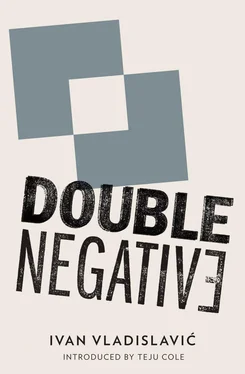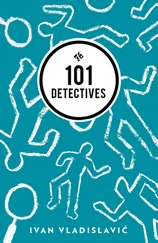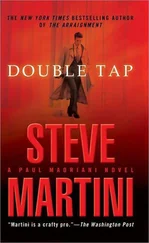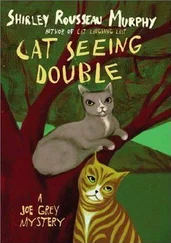Like many reluctant public speakers, Auerbach was articulate and engaging. Although he started out mumbling into his shirtfront, he grew more at ease with his audience photo by photo, and began to address us more directly. He had much to say about his work and its meaning, recalling places and people in great detail. Some of it smacked of the stage: you could tell that he had said it before. Disarmingly, though, the photos still surprised him, and despite having lived with them for decades, he seemed to discover new aspects of them even as he spoke. Once or twice, he stood staring at an image as if it had been made by someone else and smuggled in without his knowledge.
In every classroom, even one as informal as this, a few people dominate. We had an architect (I assumed) who spoke about the buildings in the photos as if the buildings themselves could speak — this one was glibly articulate, that one made a vertical statement, another declared its intentions in stone. Her language was so familiar to me — the world is speaking, things are mouthing off, they won’t shut up for love or money — that for a moment she looked like someone I knew. Besides this person, we had an earnest young woman who asked questions about the light and wrote the answers in a notebook. The only other man in the group, a pensioner with a startling pelt of ginger and white hair on his head and face and chest, hung back whenever we shuffled after Auerbach, leaned in close to some corner of the work we had finished discussing, until his horned eyebrows were nearly crumpled against the glass, and examined the surface minutely. The gesture reminded me of my optician zooming in with her penlight to shine a beam at my retina.
Would he recognize me? I had been wondering about this ever since I read the notice in the paper. It was half the reason I was here. I found myself pressing forward when the circle formed, foregrounding my face, dangling it there to be snapped. Of course, he had no reason to remember me; we had met just once and I had done nothing since then to distinguish myself. I had changed too, the long hair and the beard were gone, I was ten kilos heavier. But then the man was a photographer with a famously observant eye. I dangled my face hopefully, but there was no flicker of recognition.
We entered the second exhibition room. Another questioner joined the discussion. This particular image, she said, reminded her of Dorothea Lange’s photographs of American workers in the Depression. What did he think of Lange’s work? Was she an influence? Or should one rather look to the usual suspects like Walker Evans?
At last we got to the third room, where the accidental portraits hung. Veronica and Mrs Ditton were side by side on the far wall. We began to circulate in an anticlockwise direction. It was only now that I realized we had been going clockwise in the other rooms. Although the change was almost certainly insignificant, once it had struck me I couldn’t put it out of my mind. It made some subtle difference to my orientation. I tried to figure out what it was, half-remembering something about the circulation of consumers in supermarkets and the optimal disposition of shelves, gondolas and fridges, but the discussion between Auerbach and the art lovers kept disrupting my thoughts. Out of the corner of my eye, I saw the ginger man, the one who reminded me of a raccoon although I have never actually seen such an animal, smelling a corner of one of the photos.
People were always complaining that he was overly concerned with buildings, Auerbach said, and insufficiently concerned with the people who lived in them. But in truth he had always been photographing both. If all his negatives were to be classified into those with people and those without, he was prepared to wager it would be an equal split. In any event, the distinction was immaterial, because people made the buildings and buildings shaped the people.
The architect said it was a classic chicken-and-egg situation, absolutely.
It seemed to me that this might be related to the distinction between clockwise and anticlockwise, but I couldn’t think it through because the light specialist was asking another question. On the light, she said, and how he approached it: did he regard the light that struck a human cheekbone in the same way as the light that struck the side of a barn? Say.
The portrait of Veronica loomed. When we got there, I would introduce myself. ‘You don’t remember me, but I was there when you took this photograph …’
The furry ginger man slumped into a corner to examine the brickwork on a Dutch Reformed church.
We stopped at the portrait of a young girl playing the organ. Before Auerbach could say anything about it, a woman who had been quiet until then raised her hand, like a shy schoolgirl, and said, ‘Mr Auerbach, I wonder if you remember me …?’
‘You should have spoken to him anyway,’ my mother said.
‘I couldn’t, the organist beat me to it. After that, I could only look like an imitator. Everyone made such a fuss — “I thought I knew the face!” “You haven’t changed a bit!” — and she stood next to the photo so we could compare. Before and After.’
‘You could have taken him aside,’ she insisted, ‘he’d have remembered you, especially if you’d mentioned Douglas. Your uncle was one of the first people to recognize his genius.’
We were sitting on the balcony at opposite ends of the overstuffed sofa. Her eyrie, she called it with a laugh, no self-respecting widow has a den. In the wintry light of late afternoon, with the branches of the planes etched against the glass and the distant rush of traffic on the motorway, it was like a tree house.
I told her about my last visit to Mrs Pinheiro and the Doctor’s dead letters. The idea dismayed her. ‘Dead letters ,’ she said. ‘What usually happens to them, I wonder. Where do they go when they die?’
‘Back to their Maker — if there’s a return address.’
‘And if not? There must be some that can’t be deciphered.’
‘They go round and round in the sorting room, it’s a kind of purgatory for lost mail, according to Mrs Pinheiro. But eventually, with the authorization of the Chief Sorter, they’re sent to the basement and they stay there in canvas bins for a year or so.’
‘And then?’
‘The incinerator.’
‘Sounds terribly final.’
‘That’s what she said. That’s why the hopeless cases, the ones they couldn’t figure out between them, were never taken back.’
‘He decided to save them! Pinheiro’s ark.’
‘Something like that. It wasn’t legal, of course, but they didn’t see it that way. The letters weren’t stolen so much as borrowed, held in trust, she said. Apparently the Doctor always hoped someone would come for them one day.’
‘And she showed you some of the survivors?’
‘Yes, she went into Dr Pinheiro’s room, which is closed to visitors, and came back with a bundle secured by two rubber bands.’ Most of the letters were creased and soiled as if they’d been carried in a bra or a sweaty pocket, or dropped on a dusty pavement and stepped on, and the addresses reeled across the envelopes, sloping this way and that, or squashed together against one edge in an impatient queue. ‘You could see these letters were sent by people who could barely write or afford the cost of the stamp. Half a person, half a place, bits of farms and villages, the name of a hill or a railway siding known only to the person who wrote it down. Names you’ll never find on a map or in a directory.’
‘It sounds sad.’
‘It is. I keep thinking about what the letters must say, the good news and the bad, and about the people who wrote them and the people who never received them. Lost souls, calling after one another in the dark.’
Читать дальше










